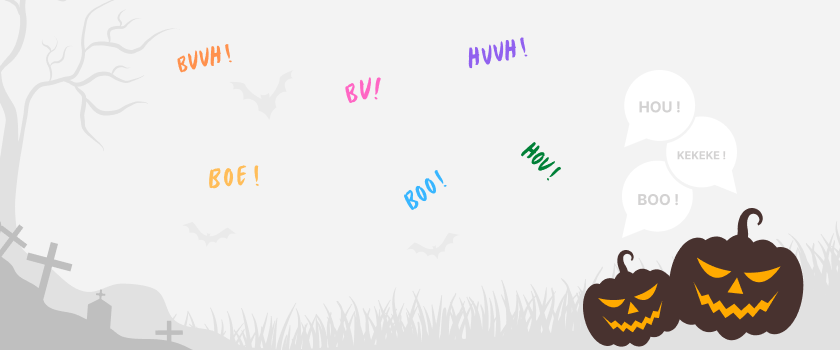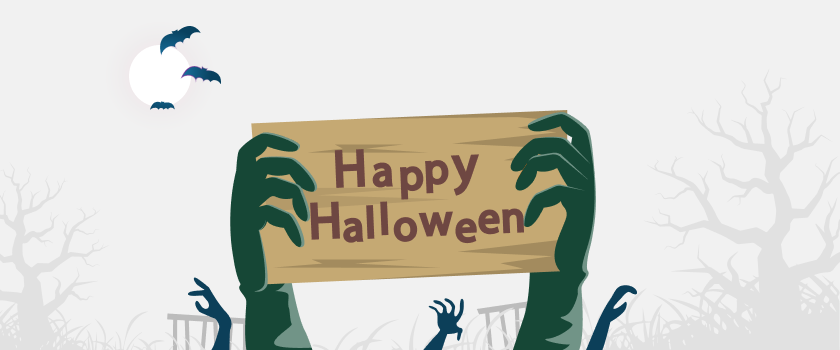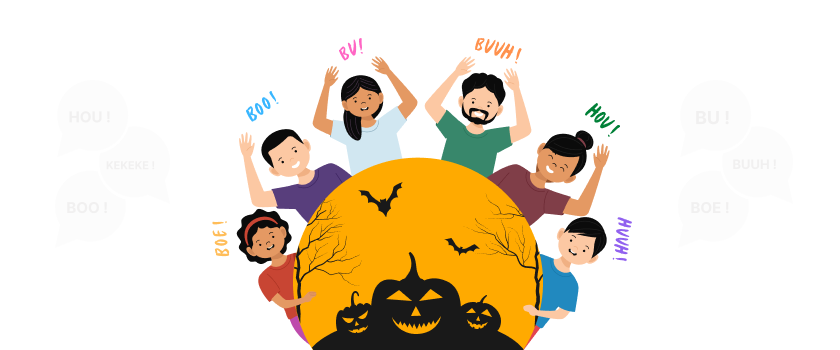When the temperature drops and nights become long and days short, it is time for the arrival of Winter. To remove the dullness of winter, Halloween is celebrated on October 31 to fill the dull evening with fun and joy.
On Halloween Eve, people wear different costumes, enjoy Halloween party games, and give a treat to each other. It is the first festival that welcomes winter. Have you ever wondered about the origin and history of this festival and why this event is essential to Christians? The answer to this question is quite tricky, and secular pop cultures have supported it for ages.
Table of Content
What does Halloween Mean?
The history of Halloween dates back to medieval Christianity. The word hallow is derived from the Middle and ancient other language’s words for holy. If you take it as a noun, then it means a saint. In ancient times, the Christian holidays were called All Saints Day, and it was also called Hallows Day. The day before this festival, the Mass was held. Therefore, it is called Hallows Eve. Those three words, holiday and holy, even resulted in the emergence of the word Halloween.
How to Say Happy Halloween in 20 Languages?

You can enjoy the traditions of Halloween if you other languages they understand. Halloween is a vibrant festival, so to enjoy it at its fullest, try to greet Happy Halloween in the native language. The USA is a melting pot because people from different ethnic backgrounds live there. Let’s see how you can greet Happy Halloween in other languages.
| Language | Happy Halloween Greeting |
|---|---|
| Chinese | Wàn shèng jié kuài lè |
| Spanish | Feliz Halloween |
| French | Halloween heureux |
| German | Fröhliches Halloween |
| Dutch | Gelukkig Halloween |
| Swedish | Lyckliga Halloween |
| Danish | Lykkelig Halloween |
| Italian | Happy Halloween |
| Indonesian | Senang halloween |
| Filipino | Masaya Halloween |
| Portuguese | Feliz Dia das Bruxas |
| Gaelic | Samhuinn (the original) |
| Polish | Wesołego Halloween |
| Norwegian | allehelgensaften |
| Romanian | Halloween fericit |
| Turkish | Mutlu Halloween |
| Croatian | Sretan Halloween |
| Irish | All Hallow’s Eve |
| Czech | Veselý Halloween |
| Azerbaijani | Xoşbəxt Halloween |
History of Halloween

Halloween is one of the oldest traditions in the world. It depicts the relationship between the living and the dead. Moreover, it describes the ancient traditions that show the summer-to-winter transition. Thus, transformation is the primary purpose of the holiday. In ancient times, people followed certain rituals to know what happened to people when they died. Where they go and how relatives should release them so that they move on. Countries around the globe celebrate this festival with different names. In Mexico, it is known as Mexico Day of the Dead, and in China, it is called Sweeping Day. The modern celebration of Halloween can be seen in the United States and Canada because this festival is trendy there. However, many activities in this festival are taken from the Celtic festival of Samhain.
1. Samhain
The history of the Halloween tradition in the West dates back thousands of years with the festival of Samhain. It is the Celtic New Year’s festival. This name represents the end of the summer season, and the festival depicts the harvest season and the coming of winter. According to the Celts, there is a veil between the living and dead people. This veil is fragile and makes the dead people return to the world and walk in the ways they used to. Moreover, people who died in the past year and didn’t move on would interact with living people to move on.
2. Bonfire One of the Ritual of Samhain
There is very little information available for ancient Samhain rituals because the Church Christianized them with many other festivals. Moreover, the little available data is taken from Irish monks. This is because they record the pre-Christian history of their people. Moreover, other Christians also describe some uncertain rights. They stock the supplies for the winter, slaughter the cattle, and dispose of the bones in bone fires making the bonfire another accession. People gather around the fire while eating and drinking. According to some people, it is the thin time of the year, and other visitors are likely to join the party. Most importantly, departed loved ones were expected and welcomed.
3. Frighten Away the Evil Spirits
The practice of setting out favorite foods for dead people is dated back to 2,000 years ago. Some other spirits that were never human could also appear. Pixies, fairies, and wee folk spirits, along with dark energies, are expected to pay a visit because they want to see the world again. In addition, there was a perfect chance that the spirit of the person who did evil things would appear again. Therefore, to deceive these spirits, people painted their faces with dark colors or made their faces dark with the ashes from the bonfires. With time, this tradition results in wearing masks. A living person recognizes the spirit of a loved one and can reveal themselves, but they often keep themselves safe from the unwanted attention of darker and evil spirits.
4. All Hallows, Eve
The relationship between the rituals of Samhain and Halloween is unknown. However, according to a rough estimate, these rituals occurred when Christianity came to Ireland in the 5th century. The Hill of Ward, which is present in the Meath country, was the site of the bonfire that was lit around October 31. It was the start of Samhain’s festivities. Further, they burned the fire on the Hill of Tara. According to the archaeologists from the University College Dublin, these earthworks have been taking place since 200 CE.
The Christianization of pagan symbols like legends, symbols, temples, and religious iconography is part of the Samhain festival and many others. Pope Boniface IV had announced May 13 as All Saints Day (All Hallows’ Day). It was a feast day for all those saints that don’t have any day for themselves. In the 7th century, he sacred the huge pagan temple of the Pantheon in Rome to Christian martyrs and Saint Mary. However, in the 8th century, Pope Gregory III changed the feast date to November 1. The date change is still debatable because scholars modified the date. It was a most likely move.
Traditions of Halloween
There are different traditions that people practice in their country and region. A common factor between all of these customs is celebration, enjoyment, and spooky fun. Many people travel to their favorite destinations to enjoy Halloween traditions.
Let’s look at the traditions of Halloween, which make this festival more vibrant and enjoyable.
1. Carving Jack-o’-Lanterns
Carving Jack-o’-Lanterns is an old tradition of Halloween. It originated in Ireland. The history behind this tradition is a legend about a man named Stingy Jack who got trapped by the Devil and put a condition in front of him that he would not go to Hell. But when Jack died, his soul was not accepted by heaven. Therefore, he wanders around the world as a ghost. Jack was given a burning lump of coal carved out on turnip to show the way. People began carving scary faces on turnips or pumpkins to avoid evil spirits.
2. Wearing Scary Costumes
One of the exciting parts of Halloween is getting dressed up. You will find people in different costumes in the days and weeks before Halloween and on Halloween day. It is fascinating to see people wearing costumes related to other characters like ghosts, mummies, zombies, cartoon characters, and animals. Moreover, you will find many inexplicable costumes depicting pop culture. In New York City, the parade took place to show costume creativity. People enjoy wearing different costumes and enjoy different outfits.
3. Trick-or-treating
It is the strange tradition of Halloween. People do this trick on the evening of October 31. After the end of school timings, children wear scary and silliest costumes and walk in the streets to show their costumes to the neighbors. The exciting part is that they knock on the neighbors’ doors saying trick or treat and collect candies from them. Trick-or-treating tradition collectively helps celebrate the holiday, and children love to wear favorite costumes of their favorite cartoon characters.
4. Consuming Candy
The tradition of going door-to-door for handouts has been a part of Halloween festivities for a long time. But do you know that until the mid-20th century, the treatment received by the children was not candied? They get things like nuts, fruit, toys, and coins. Trick-or-treating rose in popularity in the 1950s and forced the candy companies to come up with wrapped candies. People start favoring sweets. However, candy did not represent treats until the 1970s because, at that time, parents began fearing unwrapped things.
5. Getting Scary by Black Cats
The black cats were considered a bad omen and a symbol of the Devil from the Middle Ages. In ancient times, witches used to have black cats with them. Therefore, people started believing that cats were from the family of witches, and it assisted them in their dark magic. Black magic and cats were linked together, representing the Halloween sign. It provides a spooky ambiance on that day.
6. Use of Black and Orange
People use black and orange colors in their costumes. These colors are also related to the Celtic festival of Samhain. The black color represents the death of summer, whereas the orange color depicts the autumn harvest season.
7. Bobbing for Apples
Bobbing of apples has been part of Halloween parties for many years. This game depicts a Roman festival courting ritual that represents the goddess of agriculture and abundance. This game is played in different versions. One of its versions describes the future relationships of people of all genders. When Romans conquered the British Isles in 43 AD, the Pomona festival emerged with Samhain, the pioneer of Halloween.
8. Playing Pranks
Playing pranks is a tradition that varies from region to region. The pre-Halloween tradition called Devil’s Night is officially celebrated differently in different areas. Some people think the history of pranks is associated with May Day celebrations. However, Samhain and All Souls Day are related to good-natured jokes. When Scottish and Irish immigrants came to America, they brought the tradition of celebrating Mischief Night. The mischief night is part of Halloween. Candy-fueled pranksters mainly played it.
9. Eating Candy Apples
People dip fruits in candy apples to preserve the food for centuries. In the Roman festival of Pomona, the goddess represents the association with the apple. This fruit symbolized the harvest yields. But the first tradition of candy apples didn’t occur until the 1950s, s. Girls used apple peels to pray for their destiny. The connection between apples and courtship shows a profound and ancient link between fertility, apples, and everlasting life.
10. Catching Bats
Bats represent the ancient celebrations of proto-Halloween. Apart from Samhain, the Celts set large fires in the form of bonfires that attract insects. Insects, especially bats, are drawn toward the fire. According to Medieval folklore, bats represent death.
11. Witches on Broomsticks
Have you ever wondered why witches are a standard costume on Halloween? In the medieval ages, a woman was labeled as witches, and they practiced divination. These women curl up around the fireplace and go into a state of chanting using hallucinogenic herbs. According to superstitious beliefs, these women get out of the chimneys on broomsticks and frighten the country with their magical deeds.
12. Consuming Candy
The tradition of going door-to-door for handouts has been a part of Halloween festivities for a long time. But do you know that until the mid-20th century, the treatment received by the children was not candying? They get things like nuts, fruit, toys, and coins. Trick-or-treating rose in popularity in 1950 and forced candy in other languages to come up with wrapped candies. People start favoring sweets. However, candy did not represent treats until the 1970s because, at that time, parents were fearful of unwrapped things.
How to Respond to Happy Halloween?

Many people consider Halloween a pagan holiday. According to them, on this day, the devil is worshipped and evil is glorified. They want to save themselves and their families from devilish acts. This is why many churches replaced the name Halloween with the fall festival. So these people are of the view that this day should not be celebrated as a pagan holiday.
The other school of thought considers Halloween harmless and funny activities for kids to enjoy with their favorite costumes. It is a time for decorations, parties, and giving treats to the neighbors. For many people, Halloween is a non-religious festival so they don’t confront different traditions of its celebrations. Responding to Halloween is participating in its different traditional activities with enthusiasm.
Wrapping Up
Celebrations of different festivals add colors to the monotonous life of the people. By wishing the people greetings of the festivals in their native language, you are sharing their happiness. Let’s plan to celebrate a vibrant and colorful Halloween festival by greeting them in the language they understand.



